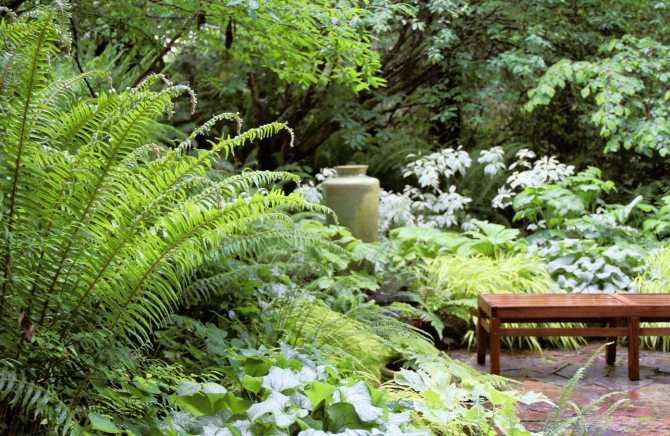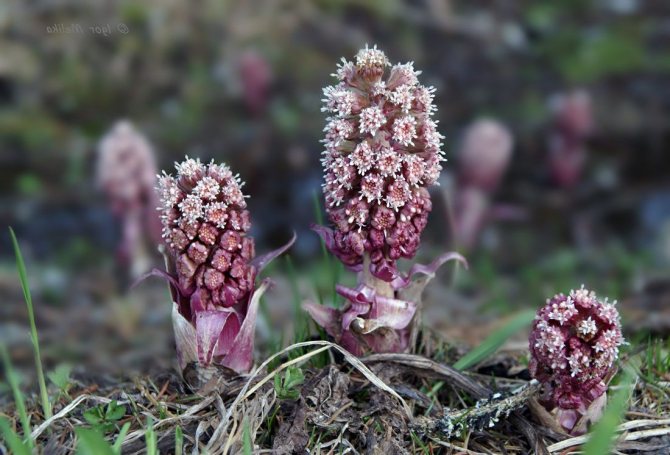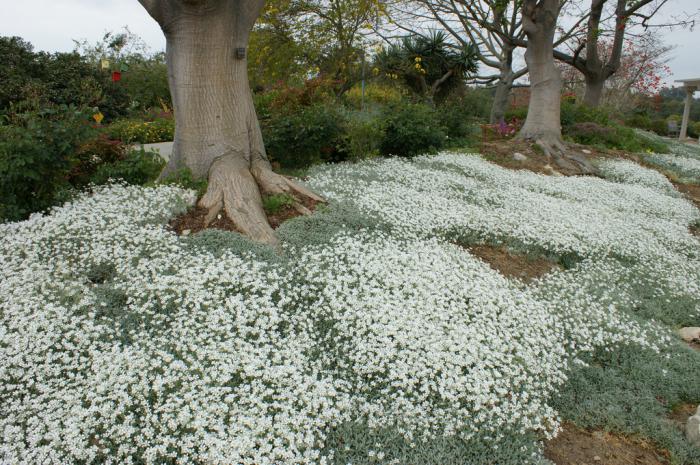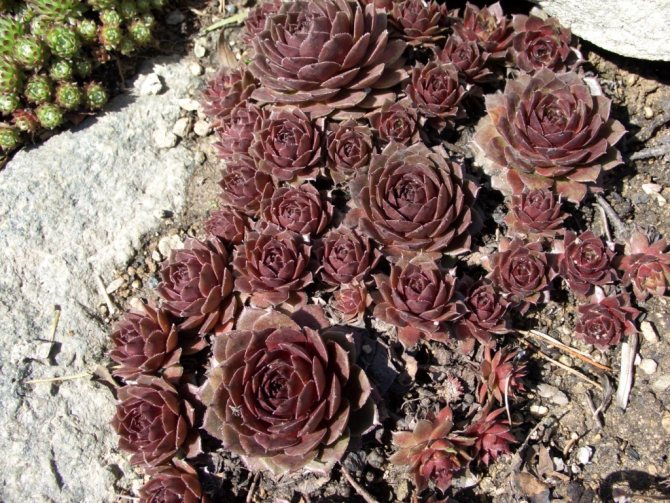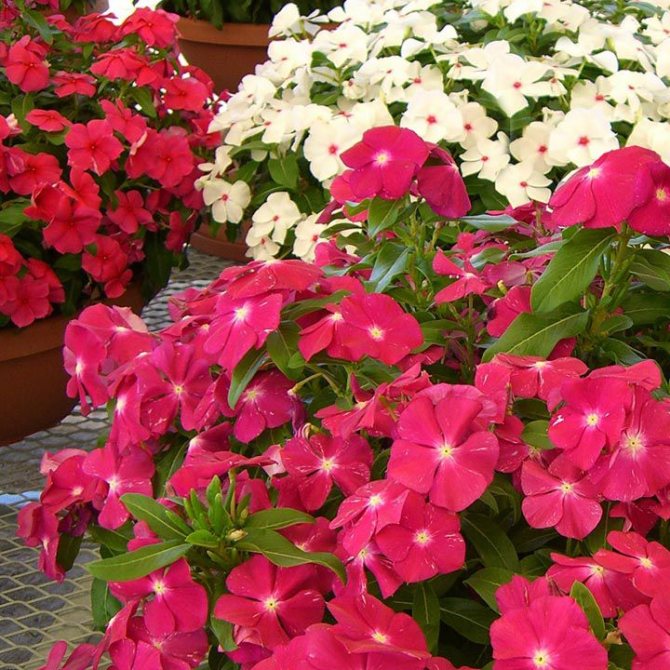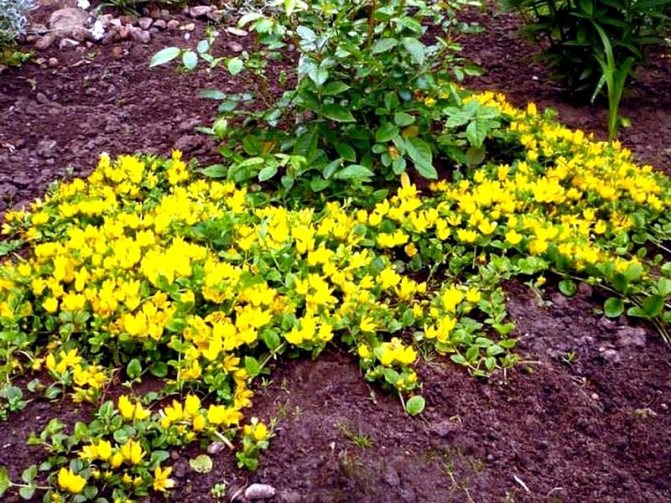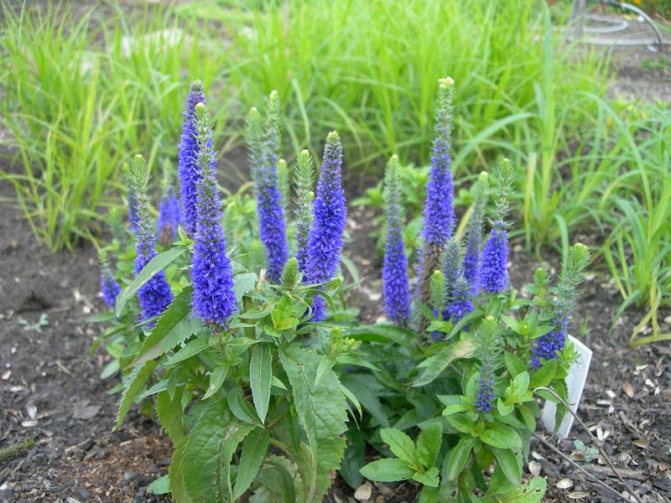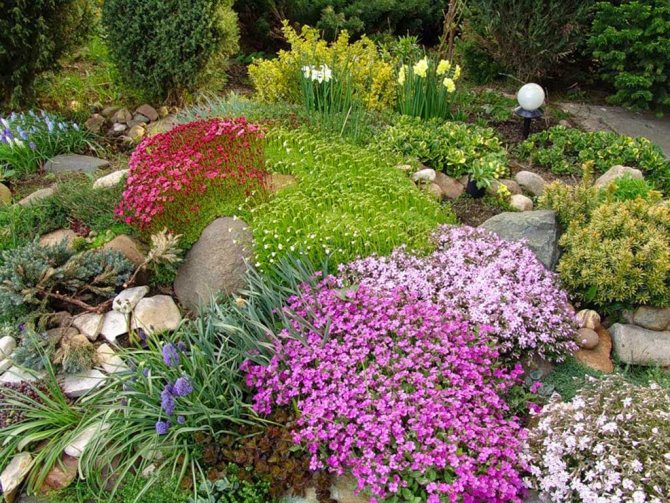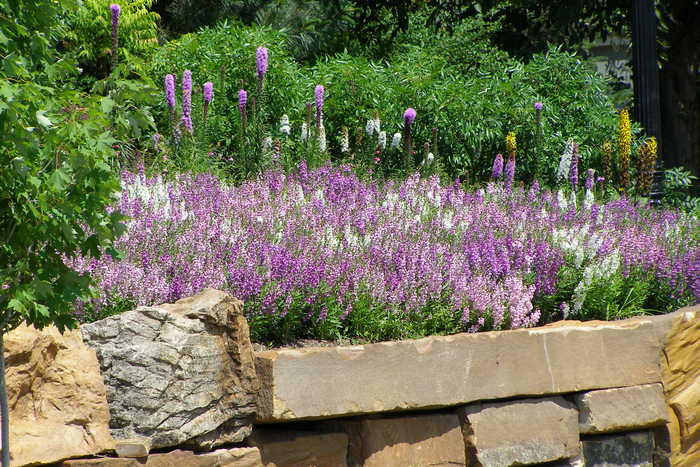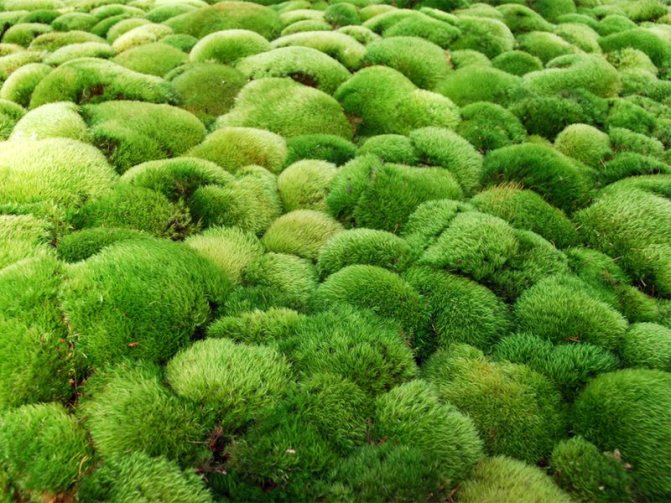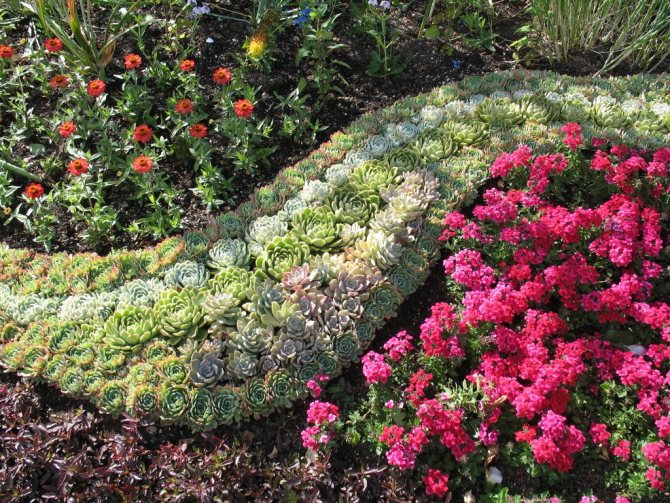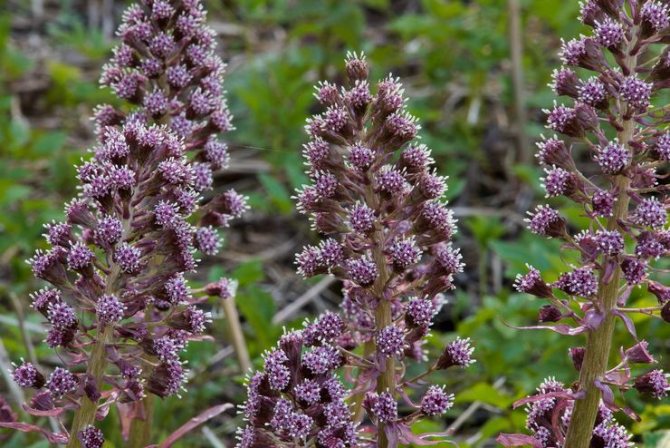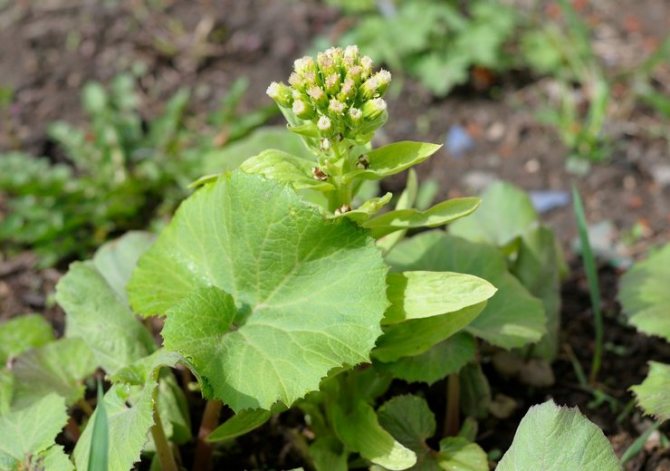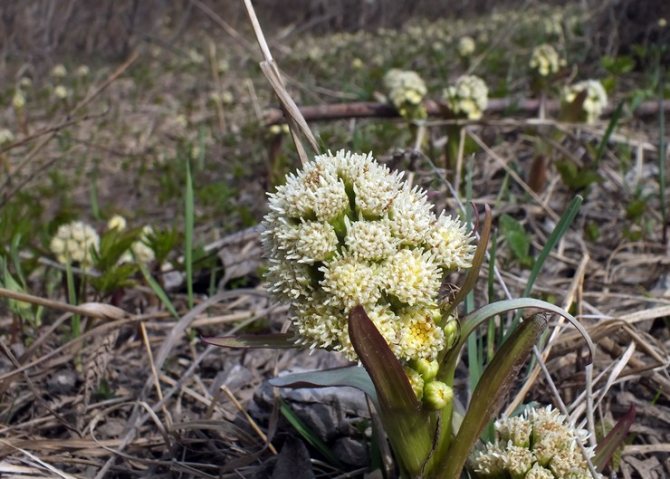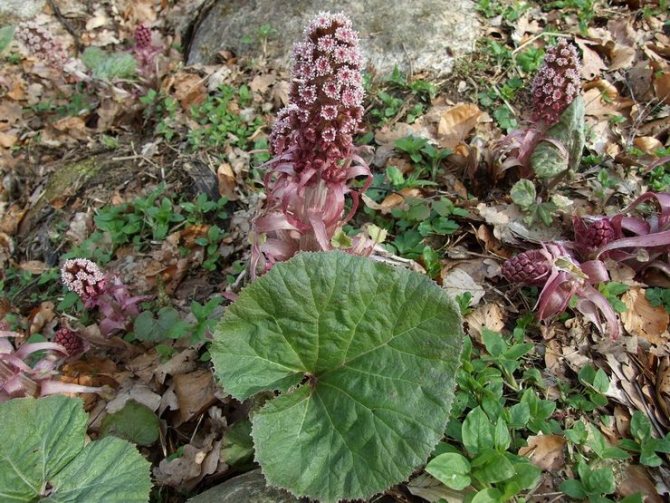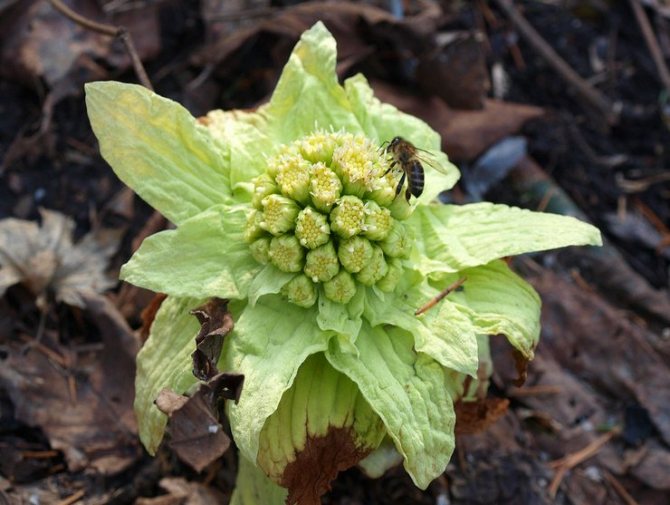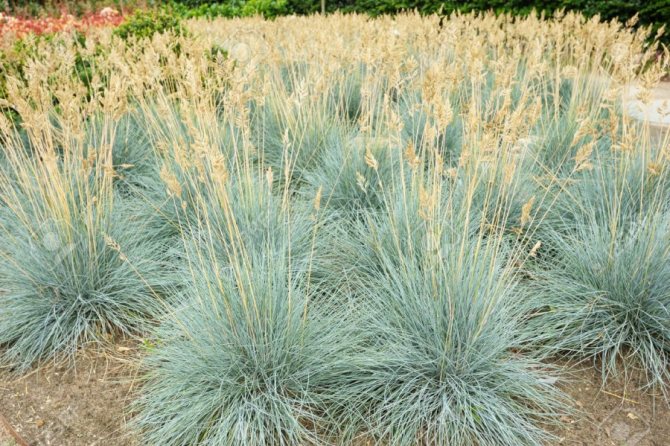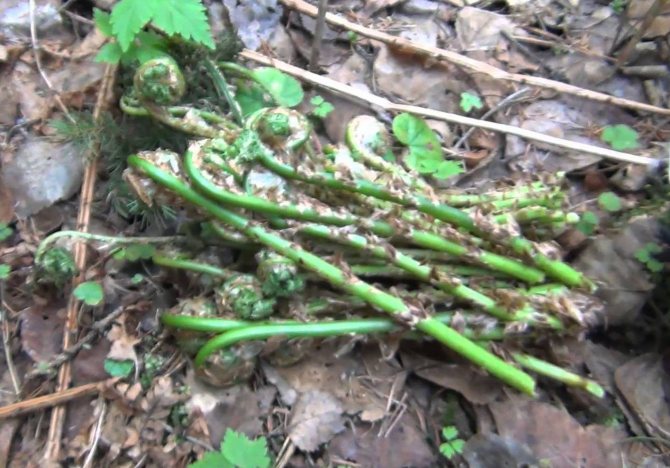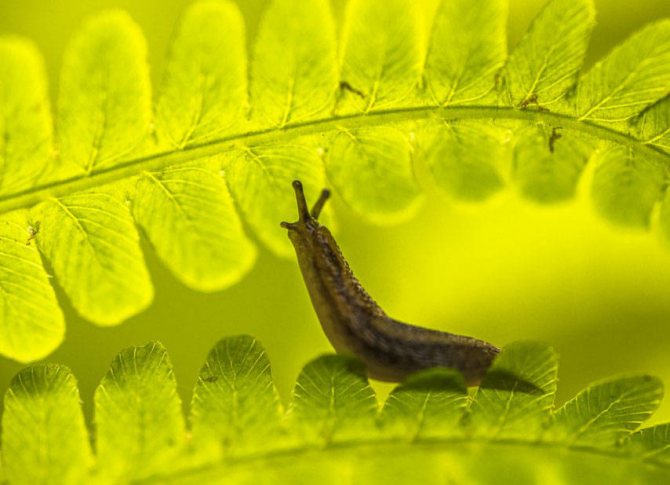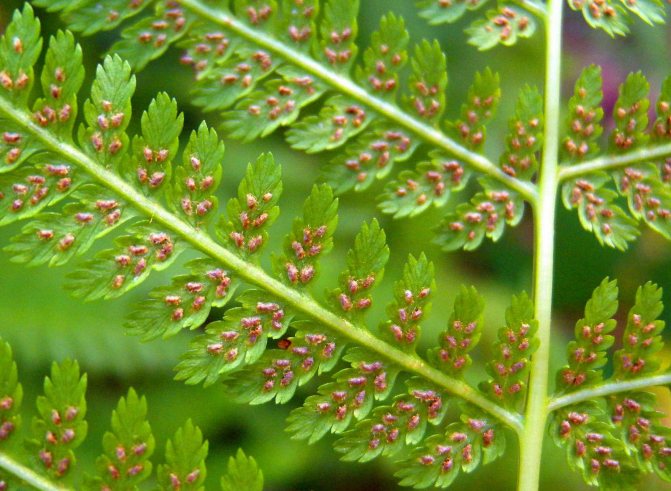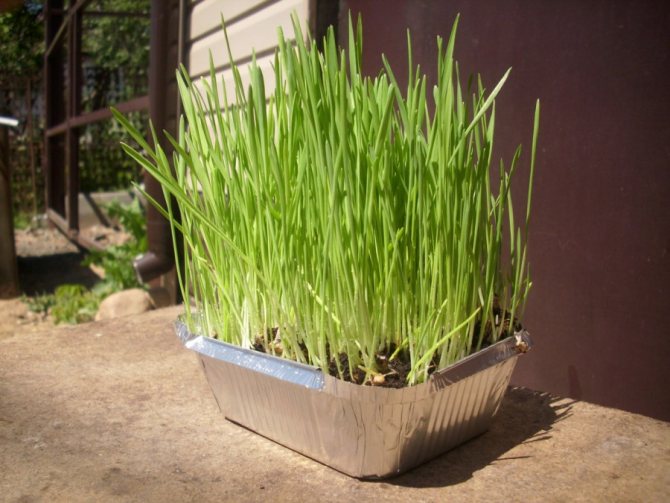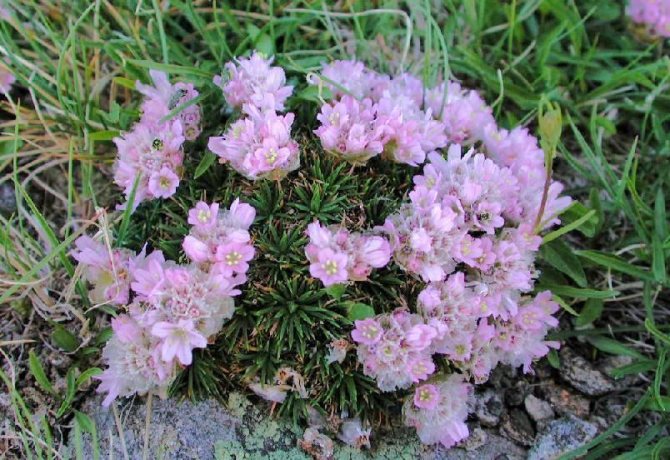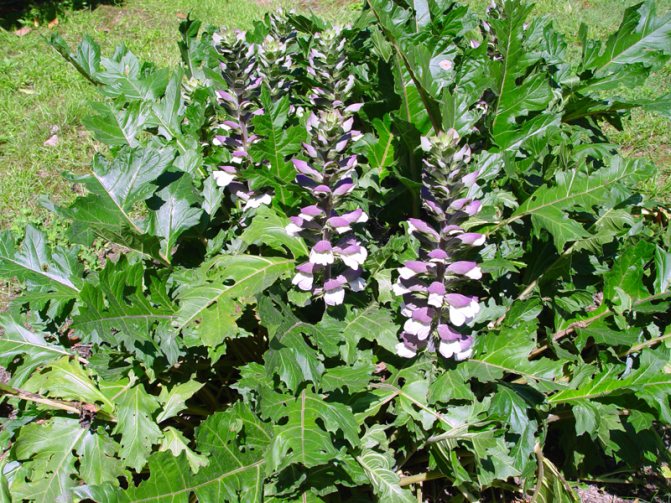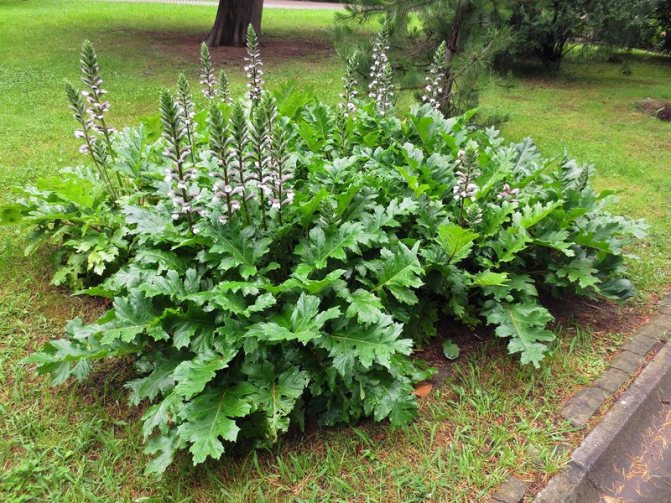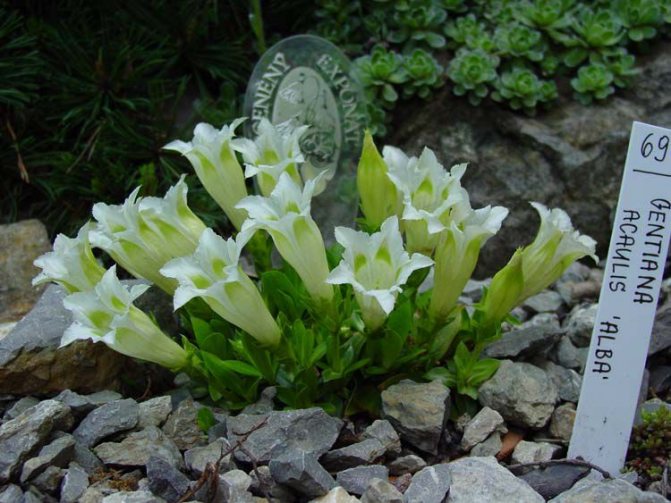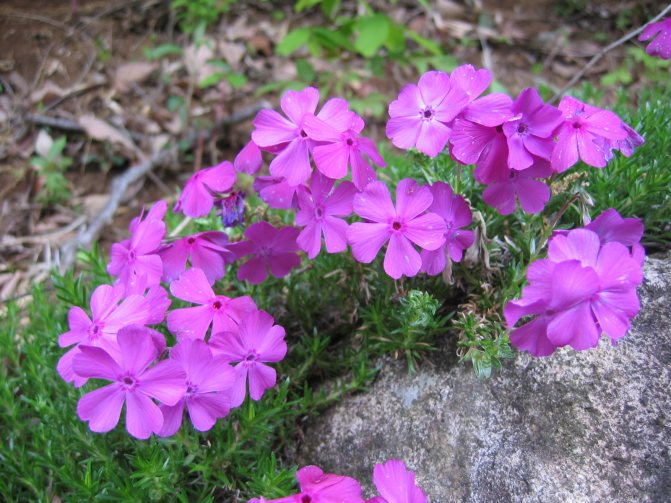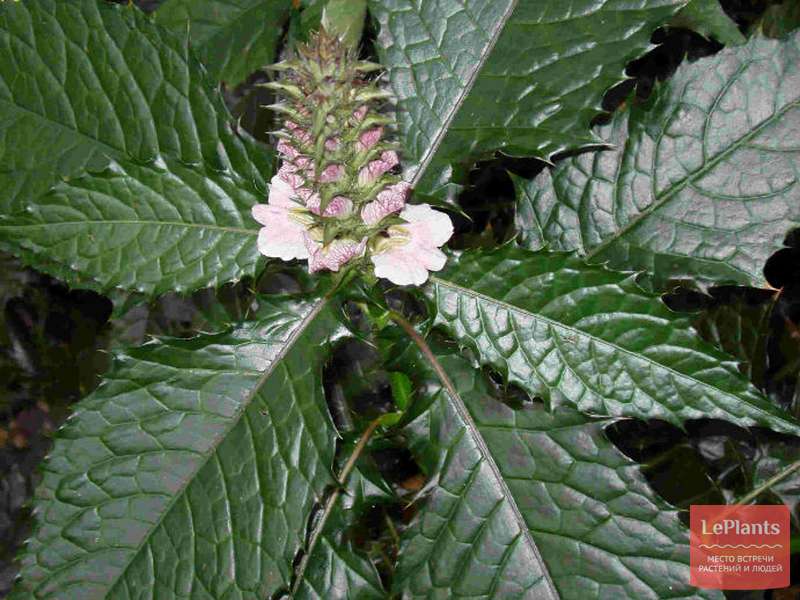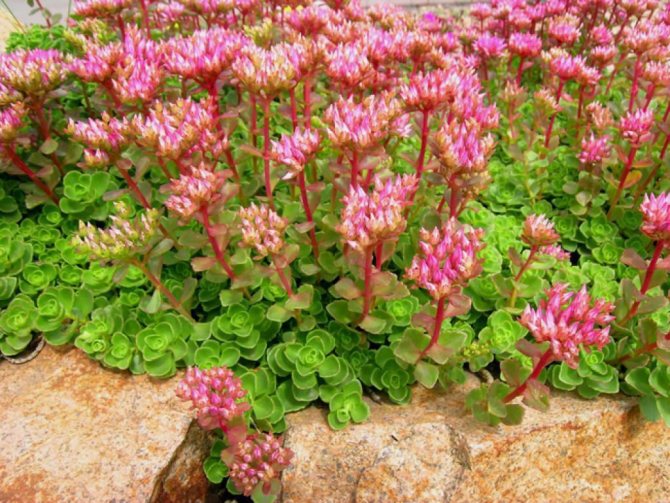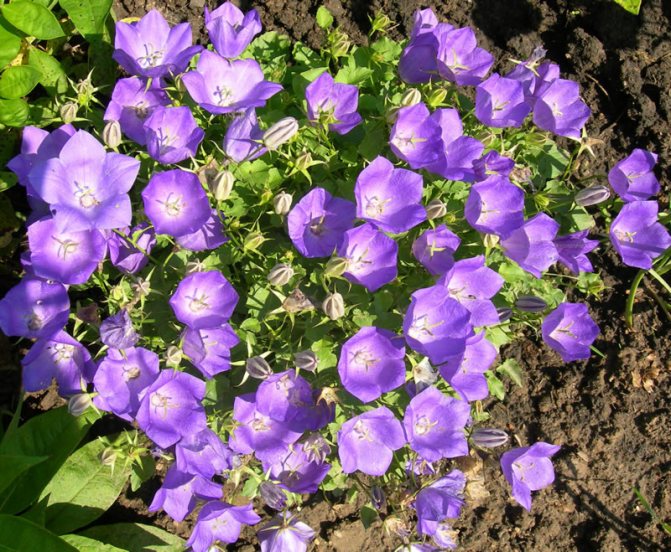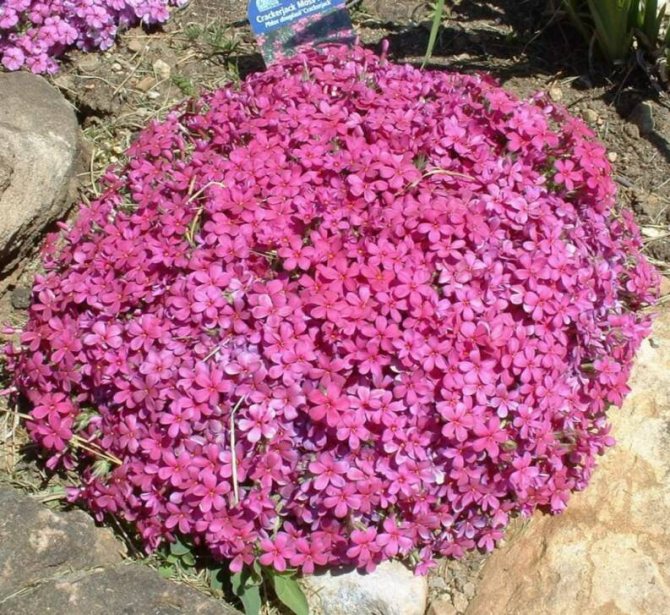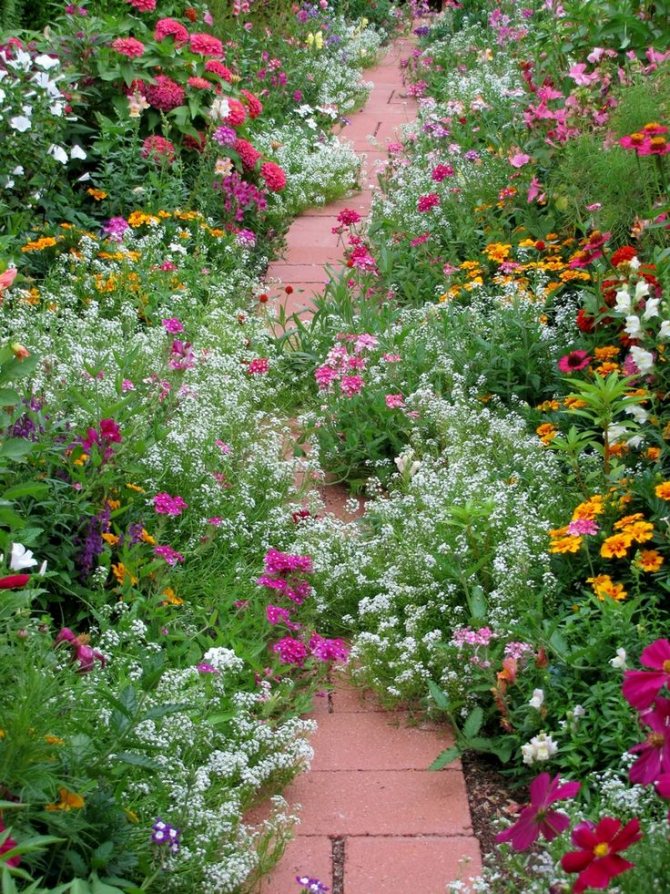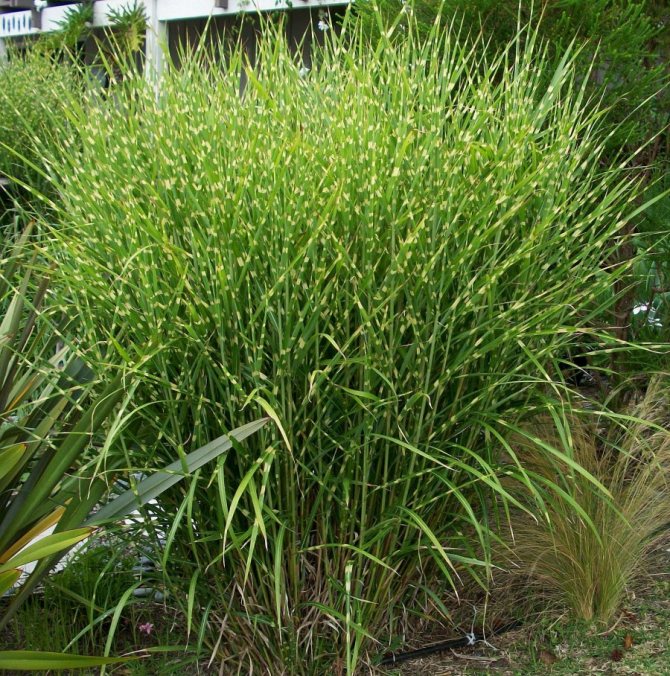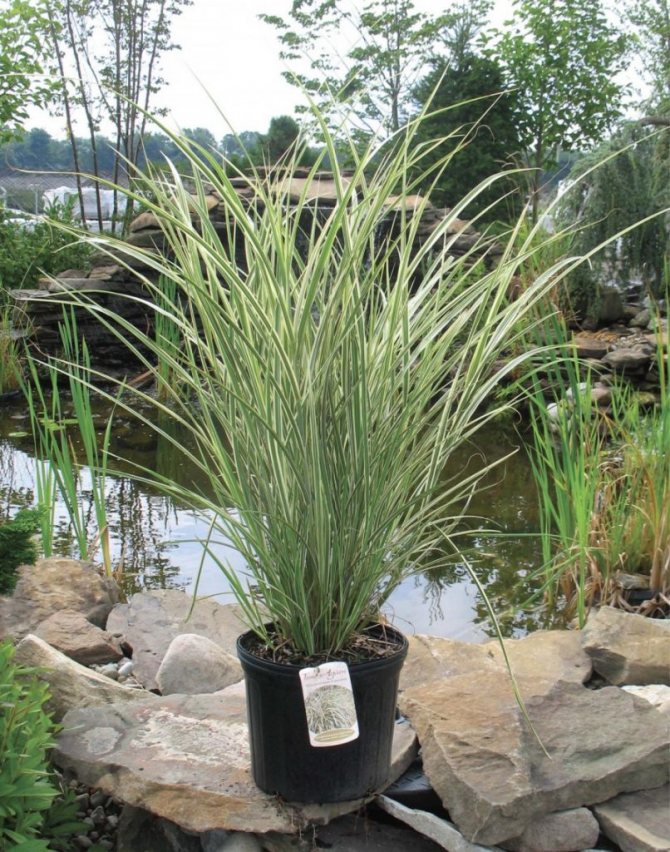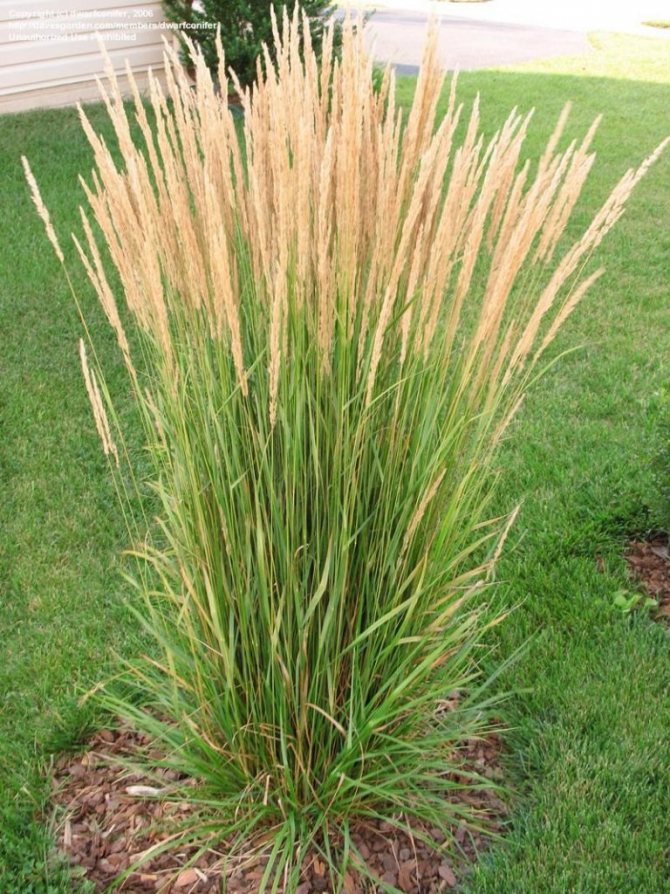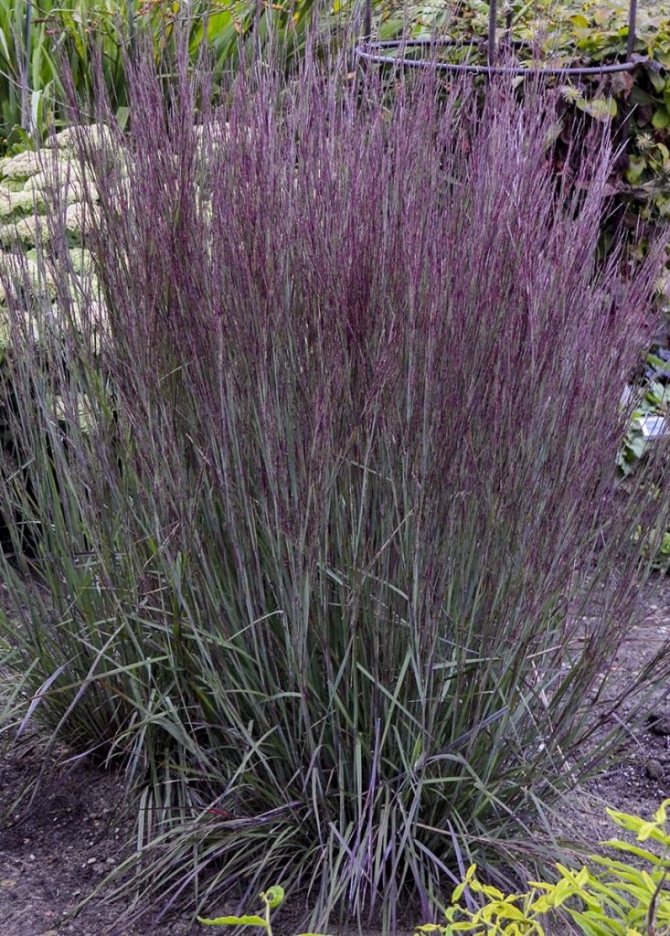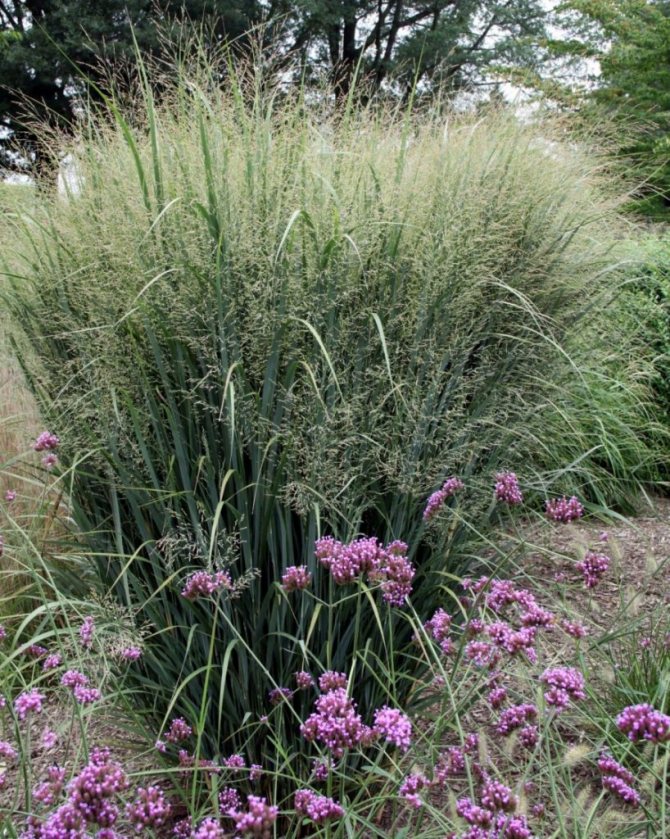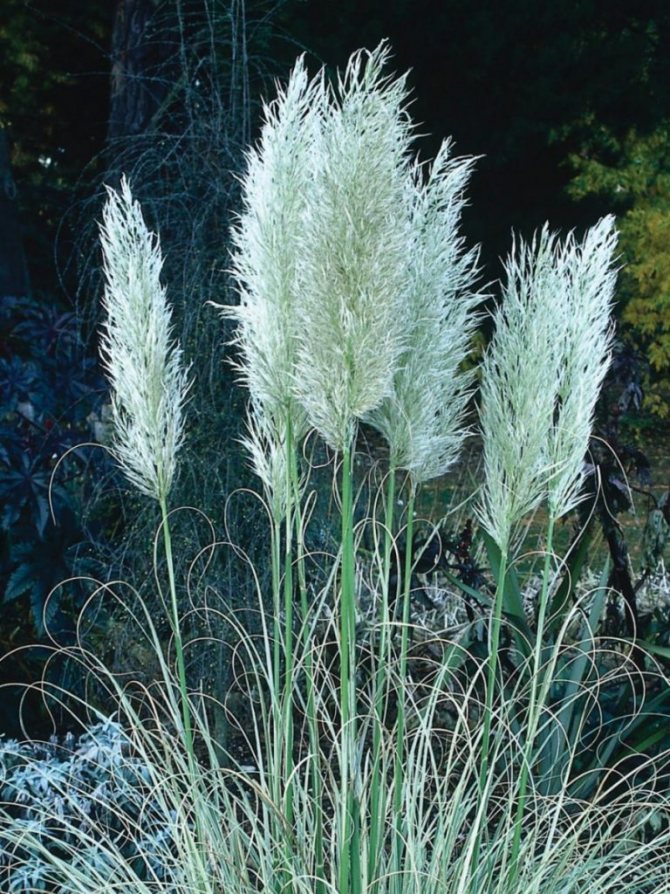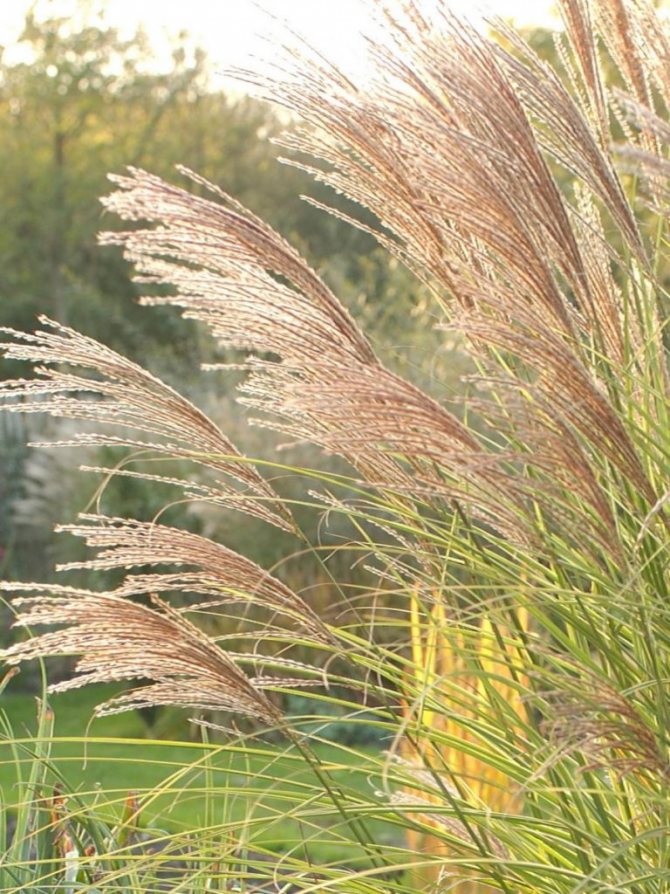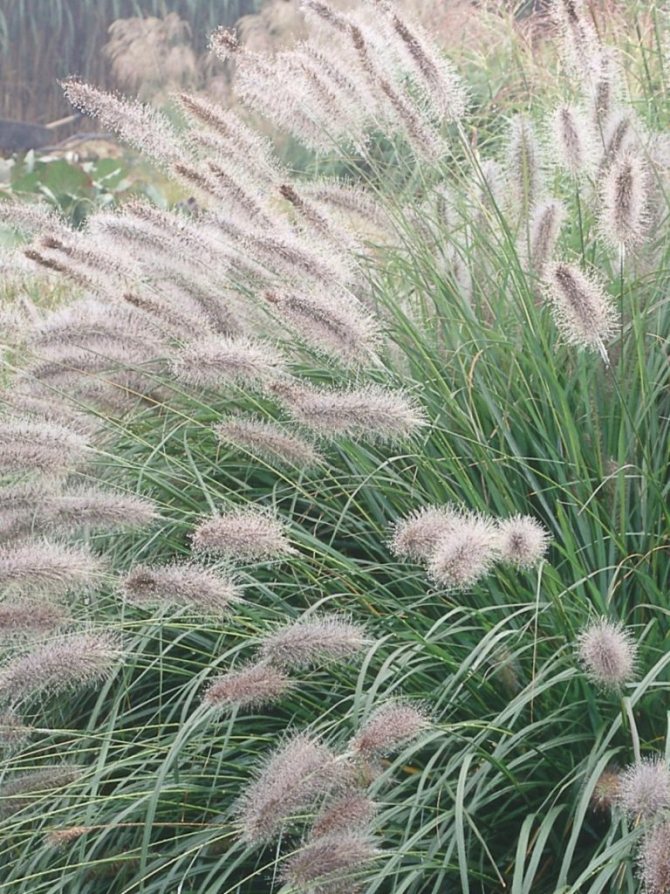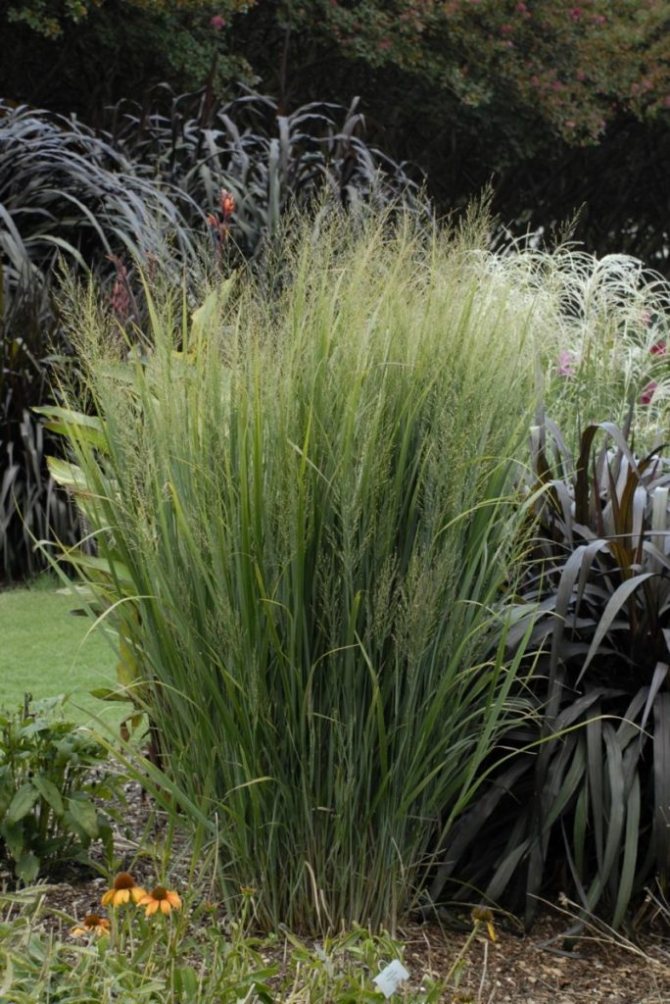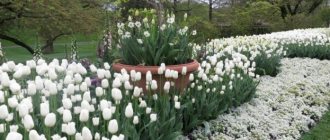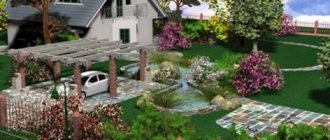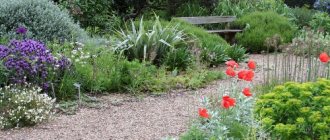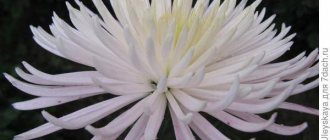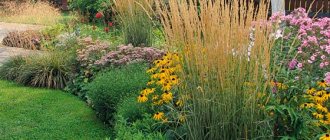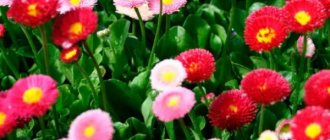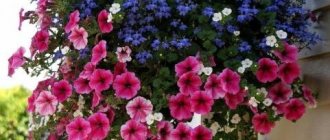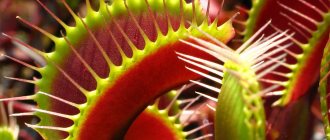Every gardener will love groundcover perennials. These self-growing plants do not need to be cared for carefully. They will be a decoration for the garden and will be useful.
These are the most unpretentious perennials. Such flowers love the sun, but at the same time remain shade-tolerant. They will prevent the soil from losing moisture and protect it from erosion. The microclimate in the area with these plants will be regulated. The ground cover garden looks neat and clean. Thanks to them, gardeners do not often have to weed and loosen the soil.
What plants can be considered ground cover
The category of ground cover plants includes low-growing plants (15-20 cm high) that can grow quickly, covering the soil with a solid carpet. This also includes plants with long, creeping shoots that take root when in contact with the ground.
For the garden, ground cover plants are chosen that retain their decorative effect throughout the growing season, evergreen species are especially appreciated. In zones with mild, wet winters, many plants hibernate with leaves, in more severe climatic zones there are very few such plants, only the periwinkle turns green from under the snow.
Almost all of the popular garden soil covers grow violently and suppress the growth of weeds. Sometimes they are even too aggressive, drowning out other flowers, if you do not follow the plantings and do not cut them in time. Such plants hold the soil well, protecting it from erosion and weathering, which is especially useful on slopes.
Thick carpets of low greenery retain moisture in the soil, which is beneficial for flowering perennials planted nearby. Many light-loving creeping species have fleshy stems and narrow needle-shaped leaves, and this helps to accumulate and retain moisture.
Most ground cover plants are undersized, forming dense cushions or mats of shoots. But there are a number of tall ground covers with large, beautiful leaves. These are geykhera, hosta, badan, tiarella, cuff. They are used as border plants for flower gardens and as a ground cover among trees.
Adonis after flowering
How and When to Collect Adonis Seeds
The seeds are harvested as soon as they begin to fall off, or even better, they are collected a little unripe. Since it is pointless to store seeds, they are immediately mixed with wet sand and sown in the ground.
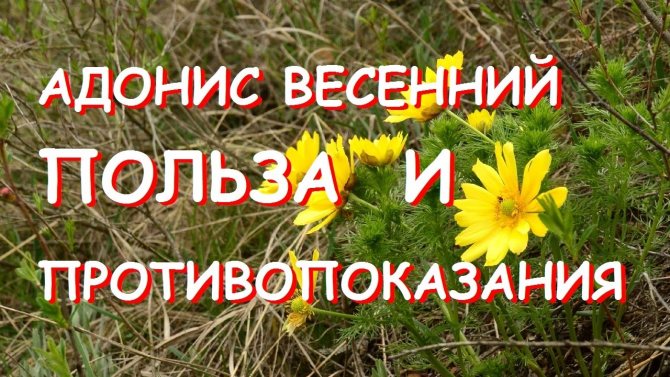
Preparing adonis for winter
Adonis plants are cold-resistant and hibernate without shelter, however, young seedlings and cuttings planted in autumn should be covered with peat and covered with spruce branches. In a year, when they get stronger, before the onset of winter, it will no longer be possible to worry about them.
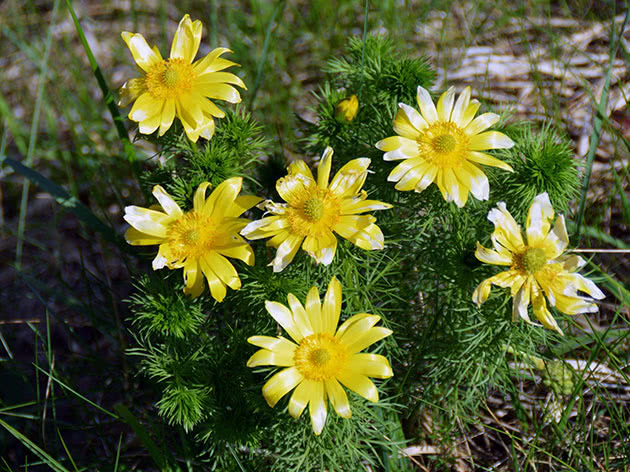

How to use ground cover plants
In shady places under the crowns of trees, the grass grows poorly, such places are well decorated with shade-loving ground cover plants. usually resistant to trampling, but most ground cover species are not so resistant, so walking on them is not recommended. The advantage of such a "rug" made of ornamental plants is that it does not need to be trimmed regularly.
Light-loving, flowering ground cover plants are used to create bright spots on the lawn, they are planted in the foreground, between the slabs of the paths, rockeries cannot do without them.
Spring plantings are perfectly combined with ground cover plants. After tulips or daffodils have faded, their drying leaves reliably cover carpet types of greenery.
The slopes and shores of reservoirs also require special low plants that can grow rapidly. Ground covers are best suited for such locations.
Garden paths made of stone or concrete slabs need decoration. Between the blocks, it is better to plant trample-resistant ground cover plants, rather than grass, which requires regular mowing.
It is more advantageous to emphasize the beauty of the stones of the alpine hill and their composition with low creeping species that can quickly braid the earthen base of a decorative structure, without hiding the shape and texture of the stone under the lush greenery.
Ground cover perennials are herbaceous and flowering plants with elongated shoots that spread along the ground. These plants take several years to germinate, so that they do not have to be re-planted, but only need to be renewed after a certain period. By the way, almost all ground cover specimens are perennial, with the exception of a few species. The advantage of ground cover perennials is also the fact that they are not picky about climatic conditions and soil. They are decorative and grow quickly, forming a beautiful “carpet” on the flower bed.
Beneficial features
Medicinal properties have been known for a very long time. The Austrians found dried butterbur root in ancient settlements. For medicinal purposes, the leaves and rhizomes of hybrid butterbur are used, and sometimes flowers. The drugs have wound healing, soothing, expectorant properties.
It is successfully used in the treatment of acute respiratory infections, laryngitis, pulmonary diseases, hypertension, stomach ulcers and many other diseases. Fresh juice is used to lubricate wounds, which contributes to their early healing.
In many places where it grows, butterbur is considered a poisonous plant. Only the Japanese use it fearlessly in cooking and call it "fuki" or "swamp rhubarb." It is preliminarily boiled, this broth is drained with poison, and the stalks are used to prepare "sushi".
The British used leaves instead of a refrigerator, wrapping butter in them to keep it from spoiling. Large leaves were used instead of foil for baking meat and fish. Minced meat was wrapped in them. Dried and crushed serve as a seasoning for the first and second courses, brewed like tea. The peoples living in the north use cold butterbur for food - young flower stalks and leaves are used like celery as a seasoning, and the roots are fried.
Application in design
Ground cover plants are very popular among gardeners and landscape designers due to their unpretentiousness and beautiful appearance. They are versatile: these flowers can be used in different places - for flower beds, and for a garden, and for rock gardens and rockeries.
Ground cover perennials have the following advantages:
- not picky about growing conditions;
- minimal maintenance is enough;
- flowering is lush, abundant and long;
- does not need to be planted every year;
- have excellent decorative properties.
Flowers are used to decorate the territory. Creeping plants are usually decorated with rocky flower beds, places near paths. They are used to fill space around tall flowers, and also replace curbs with them.
However, this is not the only purpose of ground cover plants. They have many functions. Here are the main ones:
- 1 Ground cover plants are used as weed control.
- 2 Creeping flowers are used to prevent the soil from drying out. They are excellent mulch substitutes.
- 3 Planting such specimens along sidewalks and paths will prevent soil washout.
- 4 Low-growing species among ground cover grasses (including those that are capable of rooting shoots) best saturate the soil with oxygen, improve its composition and properties.
- 5 Due to the bright and abundant flowering of perennials of the ground cover type, you can create a real carpet in the yard. By the way, this is an excellent method for eliminating defects in this area.
- 6 If you plant heat-loving perennials of a ground cover type around trees and shrubs, then you will not need to fertilize and loosen the soil in this place.
- 7 If you choose evergreen or long-flowering specimens, then you do not need to mow them. Also, frequent watering is not required. At the same time, the lawn will look presentable.
Thanks to these advantages, landscape designers and flower lovers have been planting ground cover plants for a long time.
Growing adonis from seeds
Sowing adonis
Sowing material of adonis very quickly loses its germination, therefore, it is better to sow seeds collected in your garden immediately after harvest - before winter, in November, to a depth of 1-2 cm. And this applies only to annual plant species. Seeds harvested from six- or seven-year-old bushes have the best germination. They germinate at a temperature of 5 ºC. Sowing of adapted (store-bought) seeds is carried out in March in greenhouses, using soil consisting of 2-3 parts of sand, to which one part of sod land and humus are added. Seedlings appear in two to three weeks.
- What ground cover plants are shade tolerant
Seeds of perennials are sown in autumn in seedling boxes with a substrate of the composition described above and the containers are buried in the snow, and before that they are kept in a cold basement. Seedlings will begin to emerge only next spring, when the air warms up to 20 ºC. But some seeds only germinate after a year.
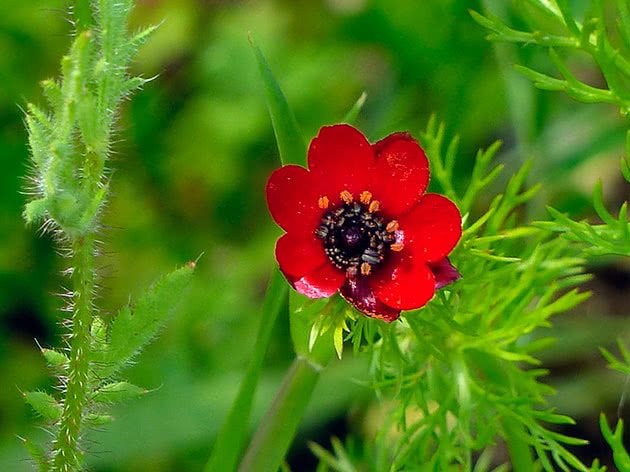

Adonis seedling care
The emerging seedlings will need bright diffused light and shading from the direct sun. Also, caring for the adonis flower at this stage of development includes daily watering and careful loosening of the soil. When the seedlings grow up, they should be thinned so that the distance between them is 15-20 cm, but if it's April outside, then take your time: soon plant the seedlings in the ground, and the adonis may not be able to transfer an extra transplant.
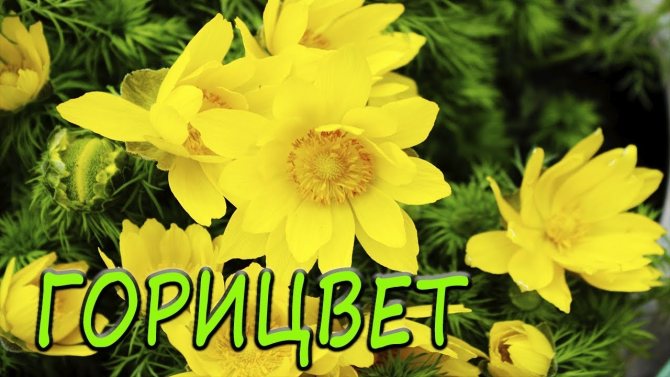

Most popular plants
There are many varieties of ground cover perennials. Here are the most popular ones.
Sedum. Sedum ground cover is considered very popular for garden decoration. They are distinguished by their resistance to drought. They are able to withstand the shade. They are not picky about the ground - any places are suitable for them, and even rain is suitable for irrigation. But it is best to plant sedums in a sunny place, then the flowering will be more abundant and bright. There are many varieties of stonecrop. In some of them, flowering begins in early summer, while in others only closer to autumn. It is recommended to plant several varieties on the site. Then stonecrops will delight all summer with beautiful flowering. By the way, stonecrops are considered very stunted - their height is up to about 8 cm. But they have the most abundant flowering.
Saxifrage. These flowers are also often used in landscape design. More than 30 varieties of saxifrage are known. A feature of these plants is that in a short period of time they can create a beautiful mossy carpet in the form of small balls with small inflorescences. Typically, a bryophyte, lush, paniculate variety and Arends are used for the garden. Saxifrags are not picky about the ground, they are able to develop on mountain slopes, rocks, and in gardens they will feel good in rockeries and rock gardens. Some varieties prefer shade, so this is great for the north side of the slope.
There are a lot of stunted perennials capable of retaining their decorative effect from early spring to late autumn. We will talk about such ground covers today.
Among them, you can choose plants that bloom beautifully and profusely, species with decorative foliage, chiseled shapes. A matter of taste, desire and design idea.
In addition to the decorative, the ground cover has a purely practical role:
- Growing up, they protect the soil from drying out, overheating, frost, and erosion.
- Their roots help maintain the structure of the soil.
- Stems and leaves, dying off, replenish the soil with organic matter.
- Weeds cannot break through their dense cover
Giving advice on where and how to plant these plants is a thankless job, especially without having before your eyes a plot on which ground cover perennials will grow. Therefore, I will simply characterize several ground covers that are widely used in country floriculture. All of them are beautifully flowering, very unpretentious, easy to plant and care for.
Botanical portrait
The oldest plants on the planet, ferns are extremely diverse and differ in their shapes, sizes, structural features and life cycle.
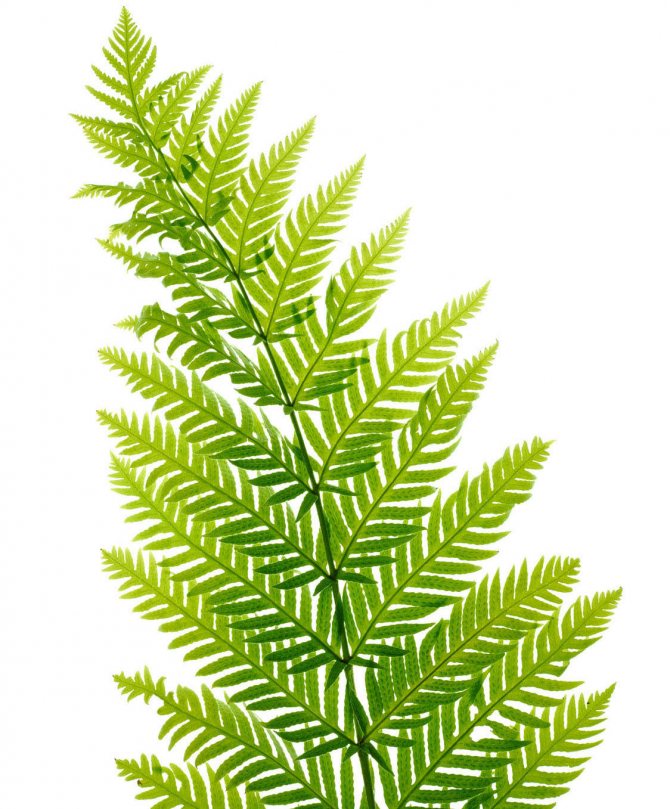

They don't have real leaves. What everyone calls leaves, it is more correct to call them flat-lined, or vayyas, which are a whole system of pagons located in one plane.
There are no flowers, they reproduce by spores or vegetatively - with the help of fragments of rhizome, frond, buds, aflebia (leaf-like processes at the base of frond) and other methods, in particular sexual reproduction in some species.
Spores, which are mistaken for fern seeds, are usually located on the underside of the frond.
Ground cover flowering perennials
Phlox subulate
The first plant that comes to mind when it comes to beautiful ground covers. Probably because its neat curtains with small needle-shaped leaves are already densely covered with pink, blue, white flowers in the spring.


Phlox subulate is rightfully considered one of the most beautiful ground covers.
If you want a monochromatic spot in a flower garden - plant one variety; if you like chintz variegation - place plants with flowers of different colors next to it.
Phlox subulate - an excellent framing of a garden path, a flower garden, harmonious in rockeries, mixborders. It will not spoil the overall picture of the garden even after flowering: phlox curtains remain neat until the end of the season.
Grows well, reproduces well by cuttings. Having bought one or two plants, in a year you will be able to have as much as you need to decorate the site.
The splayed phlox can also be a garden "rug".
Another phlox, spread out, can play a ground cover role. His flowers are larger, but more rare. Blossoms somewhat later than subulate phlox, as if taking over from him. Grows well in illuminated areas.
Brief agricultural technique:
- Sowing seeds in the ground: in spring - in April, in autumn - in September.
- The soil is poor. On nutrient soils, flowering is less abundant. A rapidly growing ground cover perennial.
- Location: sunny areas without stagnant water.
- Watering is moderate.
- From top dressing prefers wood ash. With an excess of min. fertilizer develops green mass and blooms poorly.
- For the winter, a shelter made of spruce branches is desirable. In the lowlands, where water accumulates in the thaw, plants can dry out.
Video on the use of subulate phlox in garden design.
Yaskolka
Ground cover perennial with creeping shoots forming beautiful silvery curtains 10-15 cm high, on which many small white flowers bloom in May. Yaskolka is unpretentious, winter-hardy.
It grows quickly and covers a large area with a carpet in a short period of time.
It is not difficult to obtain a crumbling from seeds by sowing them in the spring for seedlings or before winter.Seedlings will bloom in a year.
Brief agricultural technique:
- Prefers well-lit places.
- The soils are light.
- Moderate watering
- Top dressing is optional. Extremely unpretentious ground cover.
- By pruning the shoots after flowering, re-flowering can be achieved.
- Propagated by dividing bushes and cuttings in late spring.
- For the winter, the aboveground part is cut off and covered with spruce branches.
See what a chick looks like in the garden:
Clove - herbal
It is not even necessary to characterize this herbaceous perennial in detail: its features are reflected in the name. Carnation means it blooms beautifully. Grass - because its curtain looks like a mound of low grass.
Herbal carnation will paint your garden in a wide variety of colors.
At the end of spring, the creeping shoots of the grass are decorated with single medium-sized red flowers noticeable from afar.
Brief agricultural technique:
- Sowing seeds for seedlings in March under glass, then flowering begins in June. Outdoors in May - bloom at the end of July.
- The grass loves the sun.
- Moderately moist fertile soil.
- They are planted in areas that are not flooded in winter. In low places it can disappear.
- Propagated by dividing rhizomes in spring and autumn, by seeds.
- This perennial can withstand frosts down to - 35º
What does a carnation look like in a flower bed:
Ducheney
Another very cute ground cover perennial with creeping shoots easily rooting at the nodes. Dark green trifoliate leaves are very similar to strawberry, as well as bright red medium-sized fruits. True, they are inedible, but they are always in sight.
Ducheneu carpet.
Ducheney grows well in illuminated places, it is not demanding on soils. It dissipates very quickly and can even be aggressive.
Agrotechnics:
- It is better to plant on poor soils, in fertile soil, flowering will be weak, and there are many leaves.
- The soil must be kept moist, otherwise the "rug" will not be continuous, sparse.
- Propagated vegetatively (by dividing the bush, rooted rosettes) and seeds, which can be sown in spring and autumn. A rapidly growing ground cover.
- Winters well under the snow. In snowless winters it can freeze
Ducheneu lawn:
Woolly stachis
Herbaceous rhizome perennial with creeping rooting shoots. Its silvery-gray pubescent leaves look great in borders, mixborders, rockeries.
This ground cover is unpretentious and requires minimal maintenance.
Spike-shaped inflorescences, consisting of pink or mauve flowers, are most often cut out before flowering, so that they do not violate the outline of an even fluffy rug, "spread" along the path or framing the flower garden. Old rhizomes are also cut out systematically.
Stachis grows well in open areas with light soil with moderate watering.
Brief agricultural technique:
- Sowing seeds in May or autumn in September.
- Location: sunny or partial shade.
- On poor soils, casting will be more decorative.
- This groundcover will not take root in heavy, damp soil.
- Propagated by seeds and rhizome division. You can use cuttings.
- Hardy, winter shelter is not necessary.
What gardeners say about stachis:
Creeping thyme
An amazing ground cover perennial in its properties: forms even dense low sod, which bloom several times per season, if cut off after each flowering wave.
Thyme is not only a beautiful ground cover perennial, but also a medicinal plant.
But summer residents prefer to cut the thyme during the flowering period in order to prepare a fragrant herb and use it as a seasoning for meat, mushrooms, fish and as a remedy for colds, hypertension and other diseases.
Thyme curtains are easy to obtain by sowing seeds. Already in the first year, the plants grow quite quickly.If part of the flower stalks is cut off after the seeds are ripe and thrown where a fragrant thyme rug is planned, you can get a friendly self-seeding.
Thyme is worth having on the site, if only because this plant also has gastronomic value.
Agrotechnics:
- Thyme loves to grow in the sun.
- Light, loose soil. If the soil is clayey, you need to add sand.
- Drought-resistant, rare watering in hot summer.
- There is no special need for feeding.
- The main method of reproduction is seed. You can dig in a meadow, at the edges of the forest.
- Frost-resistant perennial.
The benefits of thyme: collection, recipes
Shade-loving ground cover perennial flowers
Clefthoof
This ground cover also has a self-explanatory name. Indeed, its dark green glossy leaves resemble a hoof in shape. A more suitable plant for decorating shady corners is difficult to find.
The hoof grows up to 10 cm in height, but in the garden it is always noticeable and immediately striking.
It grows well without requiring special attention. Regular watering is enough for him. Even one plant is beautiful, and when a clefthoof completely covers a piece of land, no lawn can compete with it. There is no desire to walk on such grass - it's a pity.
Agrotechnics:
- Not picky about soils.
- Location: shady, humid places.
- Loves moisture, but tolerates drying out of the soil. A very unpretentious plant.
- Seed reproduction and division of bushes. Such a ground cover can be dug up in the forest.
It turns out that this herb can quietly cure a person from alcoholism:
Periwinkle
A ground cover perennial loved by many growers with creeping shoots and hibernating leaves.
After a favorable snowy winter, the neat dark green rug of the periwinkle is adorned with sky-colored chiseled flowers. Unpretentious to growing conditions, but prefers to grow in partial shade in moderately moist loamy areas.
Periwinkle covers the ground with a dense carpet and leaves no chance for weeds.
Periwinkle is often used for turfing near-stem circles, edging flower beds, planted in borders, rockeries. It is quite easy to keep the periwinkle within the strictly designated boundaries for it: shoots that break out of the flower beds or tree-trunk circles are simply chopped off with a shovel.
Agrotechnics:
- Not picky about soils.
- It prefers to grow in shade or partial shade, but can also grow in the sun.
- Drought-resistant, rare watering in hot summer.
- It responds well to nitrogen fertilization (once in spring).
- Easily reproduces by dividing bushes and shoots.
- A winter-hardy perennial, however, in snowless winters, the leaves may die, but the plant quickly recovers.
Periwinkle: planting care, reproduction:
Tenacious creeping
It is a tenacious and creeping rhizome ground cover perennial with dark green leaves, blue candle inflorescences and creeping, easily rooted shoots.
It will grow everywhere, quickly covering and decorating open areas of soil, turning them into a dense carpet. It can even dwell on slopes. There is a tenacious with white and pink flowers. The most beautiful plants are obtained when grown in the shade or partial shade.
Tenacious is a surprisingly unpretentious and extremely tenacious ground cover, which also grows rapidly.
The red viper (another plant species) is prized for its purple leaves. The variegated leaf blades have creamy yellow blotches.
Brief agricultural technique:
- Sowing seeds directly into the ground, to a permanent place. It is better to buy seeds in the store, collected independently do not retain their parental qualities.
- Location of shade or partial shade. The tenacious will grow in the sun, but the leaves and flowers will be pale.
- Loamy soils.
- Drought-resistant, abundant watering only after planting.
- Reproduction by dividing bushes and rosettes.
- Winter-hardy ground cover. Shelter for the winter is not required.
The opinion of flower growers about the creeping tenacious:
Ground covers blooming all summer
Sedum (sedum)
This group includes more than 500 species of various ground cover plants. From stonecrops alone, you can create a beautiful flower garden. Not only flowers have decorative value, but also leaves with a wide variety of colors.
Sedum is used not only as carpet compositions, but also for planting in rockeries, robots, as curb plants. They look beautiful on rocky slopes.
Sedum plants are unpretentious, but at the same time beautiful. For this combination, gardeners love them so much.
Most species prefer to grow in the sun, but there are some that do better in the shade. Flowering begins in early summer and lasts until autumn.
Caring for this ground cover is minimal, within the power of the laziest summer residents. Almost all stonecrops are drought-resistant, they need to be watered only in hot summer.
Agrotechnics:
- It is not picky about soils, it can grow everywhere and on sandy soils and on stony soils.
- The location prefers sunny.
- Drought-resistant, watering only in drought.
- Does not tolerate waterlogged places.
- Propagated by dividing the bush, dropping shoots. It can be propagated by seeds, but it is more difficult.
- Most stonecrops hibernate without shelter. Only rare, elite varieties should be covered for the winter.
What are stonecrops video:
Purslane
Although purslane is a perennial plant, it cannot survive our winters. However, due to the abundant self-seeding, it is enough to plant it once. In the years to come, you will admire the beautiful, bright rug that blooms all summer long.
Such a bright and colorful carpet will be a decoration for any garden.
If you are looking for ground cover flowers for lazy summer residents, then purslane is the best thing to recommend. It is difficult to find a cultivated plant as unpretentious and tenacious as this flower.
By and large, it is enough to sow the seeds and water them once or twice. In the future, this ground cover will grow and grow without your participation. These flowers do not need to be watered at all - they have enough atmospheric precipitation, they do not need to loosen the soil - they grow even on the paths, they do not need to be fed - they do not tolerate manured and peaty soil, they also deal with weeds on their own.
I took this picture on the platform of the railway station, on the south side. A small crack in the asphalt and purslane grows from it.
Agrotechnics:
- Growing by sowing seeds in the ground and through seedlings. When growing seedlings, the soil from the store is not suitable. Take only regular soil and mix with sand 3 to 1. Sowing seeds for seedlings in April.
- Location: sunny, but grows in partial shade.
- Amazingly drought tolerant, can grow without watering.
- Does not tolerate low, damp places.
- Does not require loosening, weeding, feeding.
Purslane - flower holiday video:
Names of ground cover perennials:
- Mountain girl.
- Strawberries.
- Garden geranium.
- Bryozoan.
- It was rejuvenated.
- Forget-me-not is garden.
- Fragrant violet.
Most ground cover perennials do not require constant attention to themselves. And yet, going to plant them, you should thoroughly prepare the soil: add humus or compost, dig up, carefully choosing the rhizomes of the weeds.
The latter is very important: wheatgrass, field bindweed will interfere with the growth of ground cover, and it is difficult to fight weeds in the planted area.
The matured periwinkle, thyme, dusheney, tenacious, etc. will already be able to compete with weeds and will not let them into their territory, but in the initial period they need our help. This is common to all plants. Otherwise, for each species, both the landing site and agricultural technology are chosen individually.
Performing "supporting roles" in the garden, ground cover plants help the "soloists" look especially impressive, and at some moments they themselves can play the "first violin".
Even a florist with little experience knows what an incredible effort it takes to maintain order on the site. It would seem that only recently all the weeds have been removed, everything has been watered, weeded, dug up - live and rejoice. Oh no. Until I reached the far end of the site, work must begin in a new circle. All this in the literature is called "systematic withdrawal", but in fact - some kind of slavery. So it turns out that the site is not a joy, but a punishment.
Organic mulch - a solution has been found. But here, too, problems arose. requires periodic renewal, which, again, is impossible without labor or money. The most progressive florists began to use perennial stlanes instead, which grow to form a dense carpet in a very short time. This is how the concept of "live mulch" appeared. If it is still not on your site, find out ...
Why use groundcover perennials as live mulch?
Planting and caring for adonis
- Landing: sowing seeds of perennial species for seedlings - in autumn, transplanting seedlings into open ground - in April-May or August-September: it depends on how long the seeds will germinate and the seedlings will develop.
- Lighting: bright light in the morning and partial shade in the afternoon.
- The soil: light, well-drained, calcareous and rich in organic matter, pH 7.0-7.5.
- Watering: frequent, without waiting for the topsoil to dry out.
- Hilling: regular.
- Top dressing: complete mineral fertilization before flowering and at the end of summer.
- Reproduction: seeds and dividing the bush.
- Pests: slugs and snails.
- Diseases: fusarium and root rot.
- Properties: the plant is poisonous.
Read more about growing adonis below.
Ground covers can:
- Reduce the number of waterings, minimize feeding.
- Mulch the soil around the plants planted on slopes, slopes, cliffs, and scree.
- Get rid of weeding and digging over a larger area of the site.
- Get to know the stanzas in practice, study their disposition and needs.
- To get rid of the need to bend your back, to be known as a hardworking person, lying in a hammock.
The last point is, of course, a joke. But, as they say, there is some truth in it. Beautiful and unpretentious, for the most part, ground cover perennial flowers help maintain perfect order on the site, partially relieving its owners from exhausting everyday work. This circumstance will be appreciated by those who, having a large family, are the only "tractor" when it comes to work.
Iberis, or stennik
Also called "variegated". Belongs to the Cruciferous family. Popular types:
- Iberis umbrella;
- evergreen;
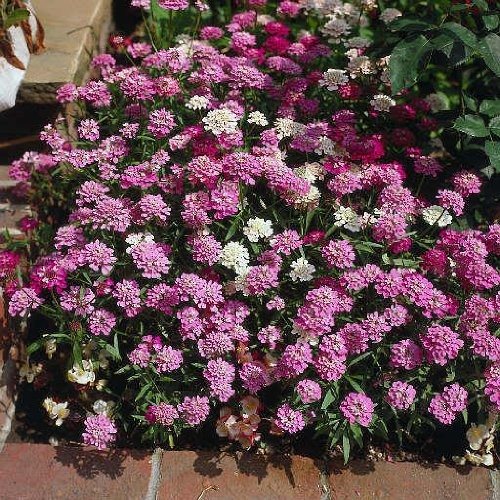

Gibraltarian;- bitter;
- rocky;
- Crimean;
- holly;
- large-flowered;
- fragrant.
Has a pronounced honey aroma. It is a kind of "rug" of green foliage, covered with small flowers of pink, purple, lilac, white or yellow. The flowers have 4 petals. The stems reach a height of 25-40 cm.
Iberis is a thermophilic plant, but it also tolerates cold enough. Blooms in June and July. Does not like too wet soil, prefers bright sunlight and sandy soil. The plant must be fertilized regularly and very carefully monitor the watering period: it should be infrequent, only during severe drought. Breeding takes place using seeds and cuttings. Iberis is resistant to various diseases and pests.
Groundcover perennials will perfectly decorate any garden plot. In addition, the variety of their choice is striking: it makes it possible to create various flower arrangements that will not require special care.
What plants can be used as live mulch?
TOP 10 most popular plants
1. Spring navel). A charming plant 20 cm tall with overwintering oval leaves.It quickly forms a green rug, which from the beginning of May to the beginning of June changes color to pale blue due to the abundance of flowers. "Creeping forget-me-not" is unpretentious, prefers shade and partial shade. An ideal plant for decorating the trunks of large trees - linden, apple, oak.
Spring navel
2. Geranium krupnokornevischnaya or Balkan). Sun-loving perennial up to 25 cm high with wintering leaves, which turn red or golden in autumn. It blooms in June for 20 days with bright purple or reddish flowers up to 3 cm in diameter. The plant, growing, forms an openwork and very fragrant veil. Looks beautiful in the vicinity of coreopsis, evening primrose, cinquefoil.
Geranium large-rhizome
3. Lamb spotted). Perennial plant up to 20 cm high with pointed silvery leaves with a dark green rim along the edge. Blooms all summer, if you remove the faded buds. Very decorative and unpretentious. Does not tolerate excessive waterlogging. Loves bright and cool places. Green lamb (L. maculatum). As beautiful as she is, but more aggressive. Plant up to 30 cm tall. Unpretentious. Blooms for 2 weeks in May, then in August-September. Can also be used for large shrubs in the garden.
Spotted lamb
4. Creeping tenacious). A wonderful creeping perennial. Forms a rich color of curtains up to 15 cm high. In May, blue, blue, less often white or pink flowers appear, collected on a peduncle up to 25 cm in height, 6-8 pieces. The tenacious grows equally well in the sun, in the shade and partial shade. Feels great in humid areas, but it also tolerates drought perfectly, without loss of decorative qualities. It grows slowly. Can be planted fearlessly for tamping plantations shrubs. Tenacious about the neighborhood with irises and rudbeckia.
Tenacious creeping
5. FROM
false edum), blooming in May-July, and
Evers sedum
), the flowering time of which is from July to August, are vivid representatives of ground cover sedums. Unmatched beauty plants for planting in sunny flower beds in the garden. Their height is from 10 to 20 cm. Unpretentious. Today there are a huge number of varieties, the color of the leaves of which will enchant even the most discerning growers.
Sedum false
Sedum Evers
6. Tyarella cordial). An interesting perennial plant that can act as a "live mulch" for black cohosh, buzulniks, host, which grow in shady and semi-shady corners of the garden. The tiarka, whose height is about 20 cm, is decorative all season: in the fall, due to the reddish-brown color of the leaves, and especially in May - June, when white or cream flowers appear above the green-bronze leaves. Today there are many varieties, tiarella, that can be used to create the lower tier in plantings.
Tyarella hearty
7. Chernogolovka large-flowered). An amazing plant with a height of 15 cm grows equally well in the sun and in partial shade. It is in good-neighborly relations with peonies, dicentra, and chubushnik.
Chernogolovka large-flowered
8. Kinsman Highlander). A unique perennial plant that can be used as a “living mulch” for plants planted in coastal areas. Evergreen lanceolate leaves, quickly forming a lush carpet, are equally well combined with, hosts,. Highlander perfectly tolerates partial shade, but in the sun his spike-shaped inflorescences of pinkish-red scale look much brighter and more spectacular. Blooms from May for about 90 days. Requires preventive shelter for the winter.
Highlander kindred
9. Bryozoan subulate). Miniature - only up to 8 cm tall, plant. Loves sunny, moderately moist areas. Blossoming July-September. It is valued not so much for its charming white flowers with a diameter of up to 0.5 cm, but for its resemblance to moss. Suitable for planting on the very front edge of flower arrangements in a natural style, near garden paths, between stones.
Bryozoan subulate
10.Phlox subulate). A plant that at an incredible rate forms a continuous carpet, the height of which reaches 20 cm. Growers appreciate it for its unpretentiousness and abundant flowering, lasting from May to June, then again from July to the end of August. It is necessary to cover slightly for the winter.
Phlox subulate "Fort Hill"
This is only a small part of the ground cover plants. You can continue indefinitely: cinquefoil (dusheney) Indian (Potentilla indica
), periwinkle (
Vinca minor
), threefold waldshteniya (
Waldsteinia ternata
), ivy budra (
Glechóma hederácea
), loosestrife (
Lysimachia nummularia
), creeping thyme (
Thymus serpyllum
) etc.
Shade-loving
There are groundcover flowering plants that are not afraid of shade.
Saxifrage
Saxifrage grows in rock crevices. Has the ability to destroy them.
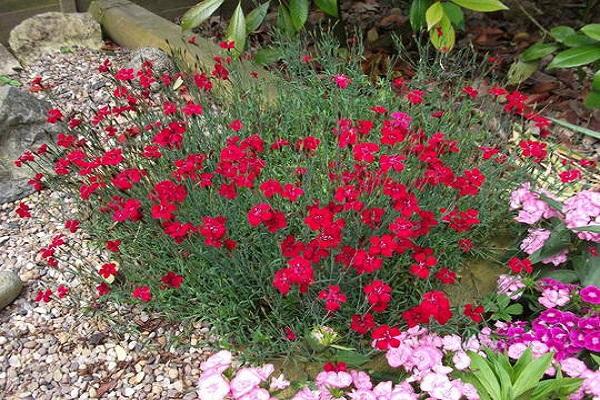

Clefthoof
The evergreen clefthoof is named for its unusual leaf shape. The flowers are tiny and hard to see.
Periwinkle
The periwinkle is adapted to all growing conditions: light, shade. The leaves are green, as if varnished. The flowers are sky blue.
Woolly chisel
Small bushes of the chitosene reach 30-60 centimeters in height. Leaves are gray-green, with villi. Bloom from June to September. The buds are light lilac.
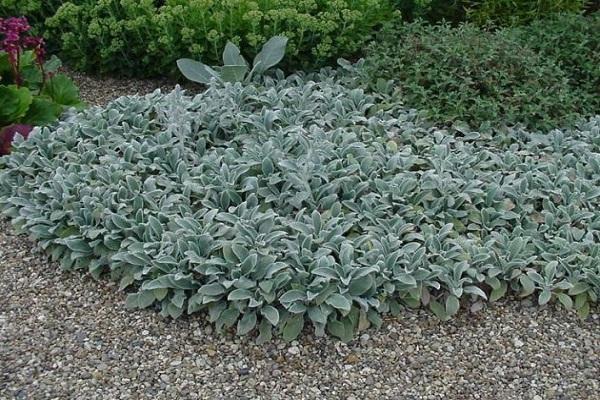

What are the main agricultural techniques?
- Before planting stanches, you need to carefully prepare the soil, taking into account the needs of the plant. Please note that after planting, the ground cover will grow quickly and it will be impossible to add sand, clay, compost.
- Before planting, it is better to add a sufficient amount of mineral and organic fertilizers to the soil. This will eliminate the need for regular feeding - foliar and under the bush.
- It is necessary to plant plants taking into account their growth rate. Dense stands will have to be thinned out next spring, and not in three or four years, as expected.
- During the period of active growth, water the plants on time and break off wilted buds. So "live mulch" will be not only practical, but also attractive in appearance.
- For the winter, all types of evergreen stans must be watered abundantly. Moisture saturation will allow the plant in snowless or little snowy winters to painlessly survive the negative effects of scalding sunlight and prickly wind.
- Some, less frost-resistant, types of ground cover need warming during the cold season. As a rule, a preventive shelter from spruce branches is enough for them to survive the cold.
That, perhaps, is all. The basics of the basics are now clear. More weighty knowledge can only be obtained in practice. As Jean-Jacques Rousseau said: "An hour of work will teach more than a day of explanation." Go for it!
Oksana Marchenko
2013 - 2019,. All rights reserved.
Aubrieta, or aubretia
People call this plant a windbag. Belongs to the Cabbage family. It has many varieties:
- Blue King;
- Cascading;
- Red King;
- Joy;
- Cote d'Azur;
- Aurea variegata;
- Royal cascade.
The native region is considered to be the Mediterranean countries. The leaves of this perennial do not lose their color even in severe frosts.
Blooms in May-June, and then, after pruning, again in autumn. The color of the flowers is blue, pink, purple and violet. The plant bears fruit in the form of a pod with seeds inside.
Cultivation and reproduction of zamiokulkas at home
Aubriet should not be watered too often... Several times in the warm season, perennials need to be fed with mineral fertilizers. Propagated by seeds or cuttings. The plant must be pruned properly after the first spring flowering.
Veronica threadlike


Veronica is a creeping ground cover perennial with a height of only 5 cm, unpretentious to light and moisture. Long and very thin recumbent shoots densely covered with small blue-blue flowers. Veronica grows well.
Grows well on loose, moist soil, in the sun or in light partial shade.During the season it grows rather quickly, forming a thick carpet.
In recent years, it has become more and more popular among summer residents due to its unpretentiousness and massive flowering. In addition, by forming dense rugs of intertwined stems, it displaces all other weeds!
Feather grass fluffy cloud
Feather grass fluffy cloud is an unpretentious steppe plant, which, when it grows, turns into original silky bushes, during flowering the tips of the bush become pink or golden.
Another extraordinarily beautiful variety of cultivated feather grass - "beautiful", has the finest stems covered with a transparent fluff.
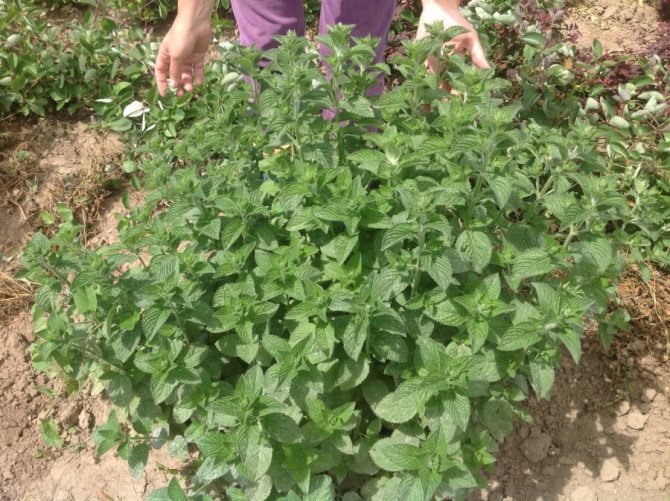

Heuchera
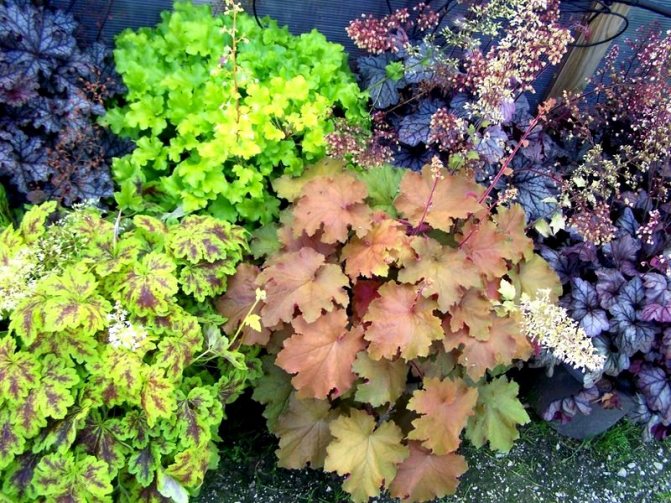

A well-growing ground cover perennial with a very wide variety of leaf colors. Unpretentious and very well combined with garden neighbors plant. Grows on light soils without stagnant water. Differs in good winter hardiness, disease resistance, multiplies easily.
Geykhera looks good in group plantings with hosts, primroses, daylilies in rock gardens, and can be used as a border.
Ophiopogon Nigrescens
Ophiopogon Nigrescens, a favorite of exotic lovers, a herb with black leaves, pink flowers and blue-black berries can be a spectacular addition to exotic lawns, rockeries and alpine slides.
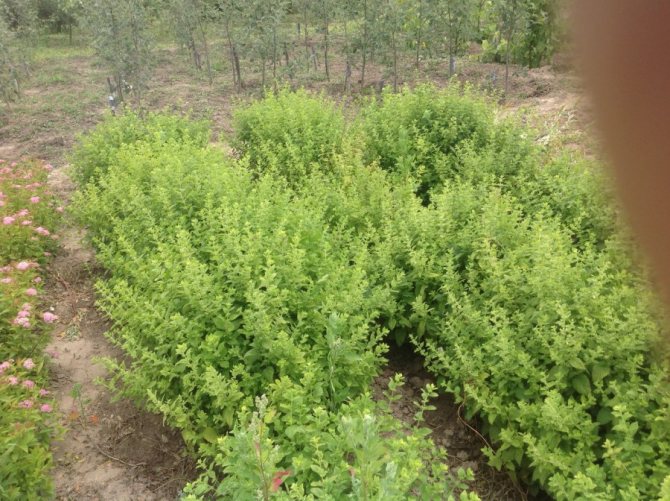

No less picturesque and a variety of ophiopogon called Japanese with bright blue berries. This plant does not need a winter shelter, is not afraid of temperature changes and winds, but requires maintaining air humidity and regular watering.
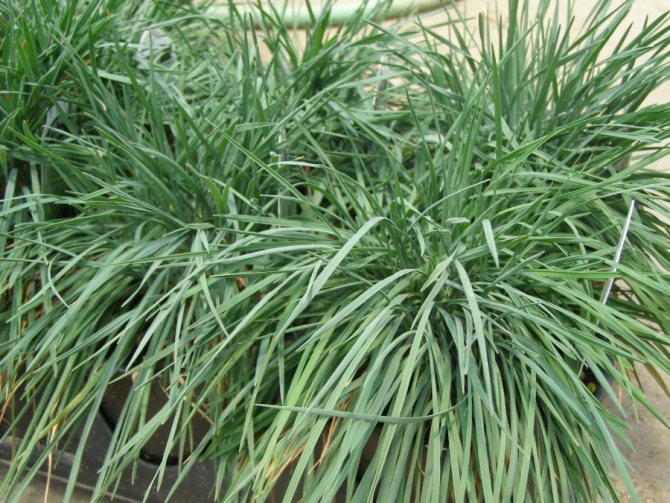

White clover creeping
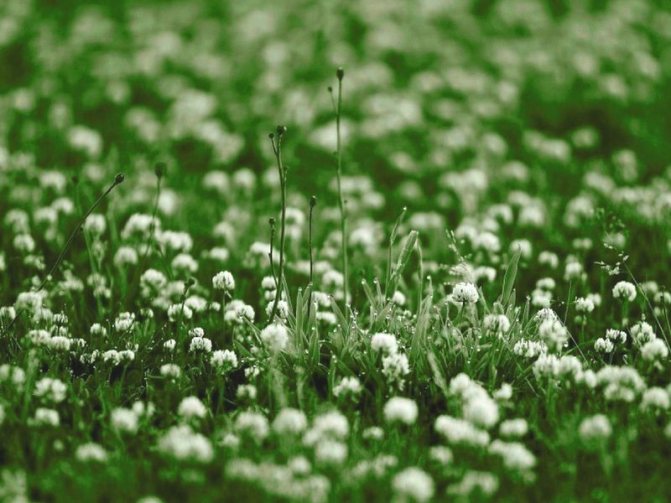

Creeping clover, unlike meadow clover, has white flowers. It is also known as Dutch clover, white gruel, lungwort, honey cake, curly honey plant, white-headed, white man.
Creeping white clover quickly forms a dense and lush turf. Clover is resistant even to intense stress and perfectly tolerates trampling. They protect the soil and improve its characteristics. Trifoliate green leaves and white flowers look spectacular. The plant is quite aggressive, so restraints are required.
White creeping clover is not picky about the soil, winter-hardy and disease-resistant, well withstands drought. It does not require mowing and retains its decorative effect for a long time.
Choice for clay soils
For planting on heavy clay soil, preference should be given to either insatiable "water-lovers" or aggressor plants, which are distinguished by the constant release of aerial shoots and underground stolons. In addition, they must be frost-resistant and unpretentious. Periwinkle, marsh belozor, Siberian brunner, clefthoof, marsh marigold, hosta, garden forget-me-not and some others are capable of withstanding the conditions of constant waterlogging and lack of air exchange.


Creeping insect (Ajuga)


The creeping tenacious is capable of growing even in the most difficult areas in terms of conditions, in arid and marginal soils. It quickly covers all areas of the area, forming a dense carpet. The plant looks most beautiful in the shade, partial shade under the trees. In the sun, the leaves lose their decorative effect, the flowers become pale. It is better to plant the tenacious on loamy soil, propagating by seeds or rosettes. Often you do not need to water and loosen seedlings. If you need to create a dense cover in the shade, instead of a lawn, the creeper is the best option.
Periwinkle
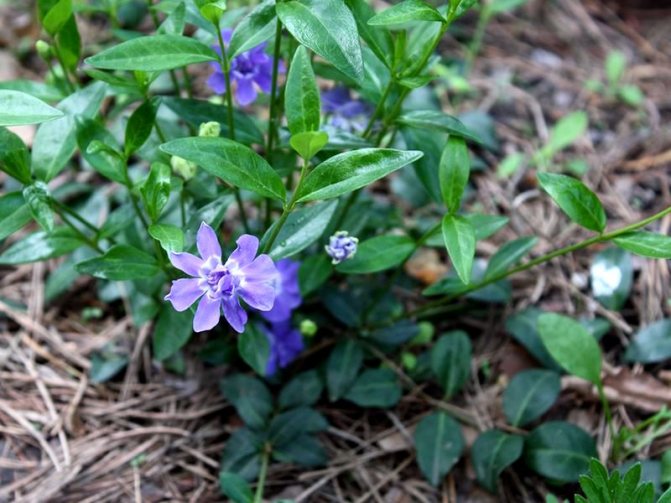

Periwinkle is an evergreen creeping ground cover perennial. Leaves are located on a branched long stem. They are capable of creating dense coatings both in the sun and in the shade, flaunting green leaves on flexible shoots and bright flowers. Periwinkle reproduces easily, grows, blooms and recovers if damaged. They are especially valuable as a shade-tolerant plant that grows well in almost any area of the garden with the exception of arid areas.Periwinkle is not picky about care, but gratefully responds to feeding. And pinching the shoots improves the branching and density of the resulting cover.
Types of ornamental grasses
The diverse family of ornamental grasses allows for multi-level and multi-colored compositions. They are not whimsical, grow quickly, are not capricious when combined with other types of plants. Their seasonal transformations from a grass carpet into original inflorescences, and then into snow-covered waves delight the eye throughout the year.
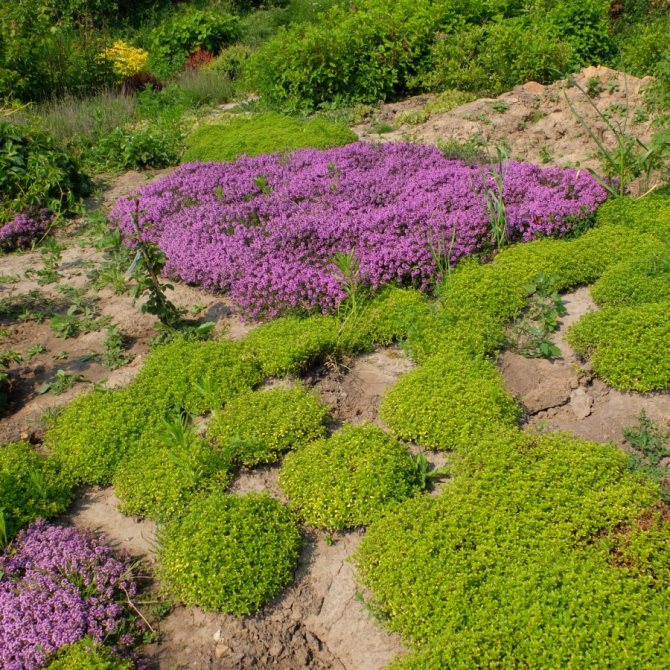

The picturesque compositions in the photo, consisting entirely of ornamental grasses, make us appreciate this type of plant in a new way for creative experiments.
Rockery is a derivative of a rocky plain, a memory of mountain meadows. Stones in the creation and design of rockeries play a very important role, both large boulders, pointed heaps, and crushed stone dumping of medium and fine fractions. Plants for rockeries should be dwarf, undersized, slow-growing, creeping and weaving. An indispensable attribute of any rockery are dwarf conifers, junipers.
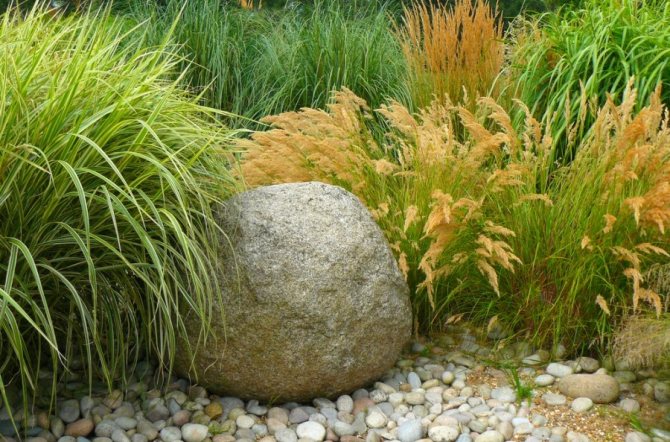

Watch the video: Ornamental cereals in the garden and in the country
Here their role is not limited to filling empty spaces and framing spectacular flowers, they come to the fore, striking with original natural energy and a riot of colors.
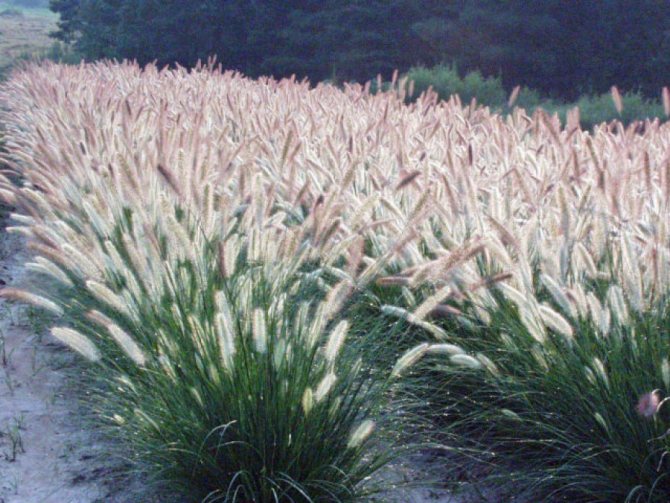

Many ornamental herbs are named after their appearance.
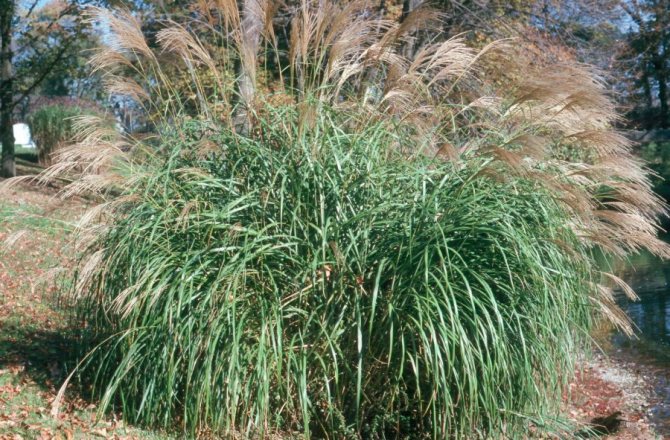

Creeping thyme (thyme)
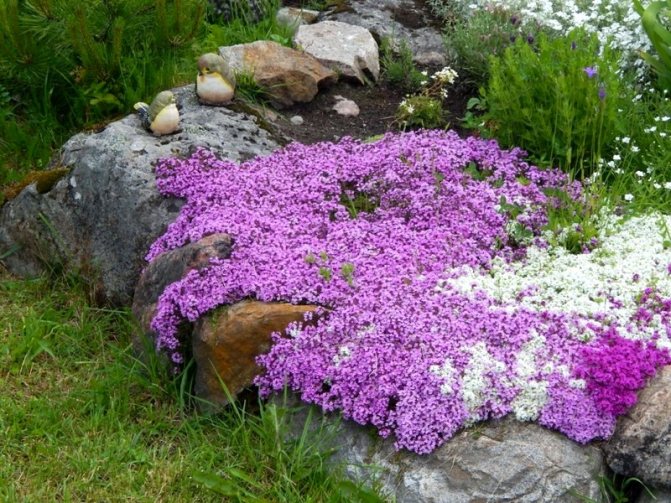

A drought-resistant creeping spice plant that forms dense cushions of small fragrant leaves as it grows. Thyme grows well only in the sun. The soil should be sandy and dry. It does not need watering and feeding.
Creeping thyme is a wonderful honey plant that has a healing effect on bees. After 3-4 years old thyme bushes begin to thin out, they need to be removed, young shoots sent there and lightly sprinkled with earth.
For the winter, creeping thyme is best covered with dry foliage or spruce branches, which must be removed after the snow melts.


